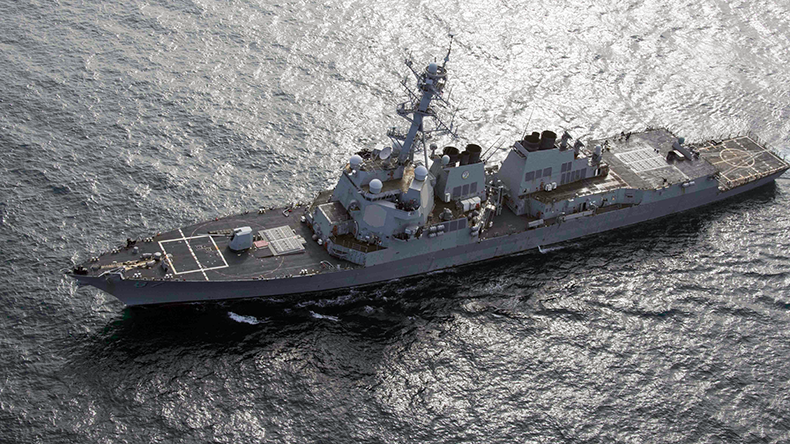Red Sea war risk rates see huge jump in wake of Yemen airstrikes
Quotes now ‘theoretical’ as oil majors join liner companies in rerouting via Cape of Good Hope, underwriters warn
Additional cost of insurance now impacting economics of taking a booking
THE cost of war risk insurance for vessels transiting the Red Sea has tripled in the past week, with some quotes now hitting 1% of hull value, according to market sources.
On paper, such pricing would represent an additional $1.3m on the cost of a single trip for a brand new VLCC booked to load a consignment of crude from a Saudi west coast port.
But there seems to have been a sharp reduction in enquiry in recent days, as oil majors including Shell, BP and Adnoc join boxship operators in diverting where possible to avoid the continuing threat of attacks from Yemen’s Houthi faction.
Indeed, the situation has now reached the point at which the additional bills are having an impact on the economics of accepting a booking that necessarily involves a Red Sea transit, underwriters added.
“Rates keep increasing due to mounting threats in the area. But at the same time, shipowners are cancelling their journeys and we have fewer voyages at risk. Therefore, quotes are rather theoretical,” said one insurer with a substantial war risk book.
In practice, war risk cover is bespoke, and big no-claims bonuses and volume discounts are widely available, so some owners will be able to cut significantly better deals.
But as Lloyd’s List has previously reported, owners of vessels perceived to have Israeli links are finding it hard to buy cover at all, as underwriters shun the additional risk in light of Houthi rhetoric targeting Israel.
There are now indications that American and British owners are experiencing similar difficulties in the wake of last week’s US and UK retaliatory airstrikes on Yemen, which seem to have done little to reduce the danger to shipping.
Premiums are now some 100 times higher than where they were before Houthi missile and drone attacks on merchant shipping began last November.
Much of the Red Sea has long been designated a listed area by the Joint War Committee of Lloyd’s and London companies market insurers, giving underwriters the option but not the obligation to levy additional premiums or ‘APs’ over and above the basic annual rate for war risk cover.
In practice, relative quiet in the region has seen insurers either waive the AP altogether or levy it at a nominal 0.l% or 0.05%.
However, the Houthi attacks — which included the hijack of car carrier Galaxy Leader (IMO: 9237307) two months ago — and the launch of the Operation Prosperity Guardian naval intervention in December led to a reassessment. Headline rates this time last week were generally at about 0.3% to 0.35%.
The day after the US and British bombing last Thursday night, rates suddenly spiked to 0.75%, brokers told Lloyd’s List. The upwards trend continued in the early days of this week, with 1% quotes seen on Tuesday.
“I’d concur with the 1.0%, I haven’t seen more than that,” said a leading Lloyd’s marine underwriter. “But I’m seeing owners declining charters due to crew and vessel safety.”
But Anders Hovelsrud, insurance director at DNK, said the Norwegian war risk mutual had not adjusted rates.
“We try to balance enabling trade versus responsible practice for our members,” Hovelsrud said.
“Most of our members are now circumnavigating Africa, or waiting outside the area before they decide to pass the strait or not.
“Commercial pressure from charterers is an issue, as [they] tend to have conflicting objectives from the shipowners, unfortunately.”
Sources indicated that the market had yet to settle and that given current momentum, there was at least a chance of rates heading further north.
Perhaps the big fear is the aggregation risk from sudden port closures if hostilities ramp up to become a regional conflagration, which could leave multiple vessels subject to blocking and trapping claims.
It was also pointed out that going round the Cape of Good Hope typically adds up to 11,000 nm and a week to 10 days to east/west voyages. The extra fuel and crewing costs can come in at as much as $2m.
While Red Sea trips are still just about financially viable for now, that may not remain the case if premiums get much higher, especially once cargo insurance is factored in to the calculations.
This factor itself represents a ceiling on how much underwriters can ask for, according to Marcus Baker, head of marine at leading broker Marsh.
“At some stage I suppose it becomes uneconomic to buy the war risk cover and the additional fuel costs make more sense. The challenge is that it is simply additional cost to the voyage and therefore cargo, which could make for inflationary pressure.”
James Willn, a Dubai-based partner at law firm Reed Smith, also highlighted possible macroeconomic consequences.
“That extra voyage time and distance is an additional cost to the shipowner carrying the product, which is then passed down to its clients via an increase in freight costs,” Willn said.
“In terms of inflationary risks these are twofold; higher freight costs themselves drive up costs as well as delay delivery of goods.
“Fewer goods delivered on time is a supply shock and was one of the reasons for the increase in inflation following the Covid pandemic.”
Munro Anderson, head of operations at Pen Underwriting’s marine war risk and insurance unit Vessel Protect, said that quote terms are significantly shorter than standard, with 24 hours rather than 48 hours being the norm.
“Rates are increasing, which is reflective of the significant and opaque risk exposure within the Red Sea,” he said.
“The key difficulty presented by the current situation is the rate of change in risk profile leading to far more dynamic pricing than would normally be the case.
“Since the naval and air strikes in Yemen, it is now broadly considered that, in addition to Israeli-connected vessels, there is an elevated threat to vessels associated with the UK and the US, including dependent flags, as well as those connected to Australia, the Netherlands, Bahrain and Canada.”
A number of vessels continuing to transit the Gulf of Aden and Red Sea are broadcasting that they are not heading for Israel, in line with Houthi demands, he added.
By way of comparison, quotes for the Black Sea — where bulkers exporting Ukrainian grain have been declared a legitimate military target by Russia — remain at between 2.5% to 3%, despite there having been no attacks of late.
The key difference is that marine Red Sea war risk is still readily reinsurable. By contrast, Black Sea and Ukrainian port calls have to be written “net line”, with the full payout at an insurer’s own expense.






